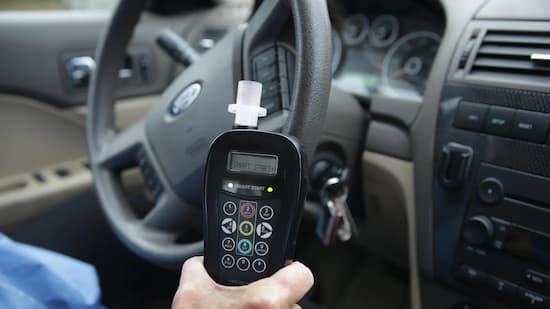Federal Government Makes Significant Progress Towards Enforcing Alcohol Test Systems in New American Vehicles
On Tuesday, the National Highway Traffic Safety Administration took a step towards enacting a rule that would require drivers to demonstrate

Federal Government Makes Significant Progress Towards Enforcing Alcohol Test Systems in New American Vehicles Photo Courtesy Forbes
On Tuesday, the National Highway Traffic Safety Administration took a step towards enacting a rule that would require drivers to demonstrate they are not too inebriated to operate a vehicle safely before the car shifts into gear. This law might make alcohol breath testing mandatory for new passenger cars.
The government can begin writing a new safety standard that would equip all automobiles with drunk and impaired driving prevention measures “when the technology is mature” since it released what is known as an “advance notice of proposed rulemaking” on Tuesday.
According to the plan, the agency is working with 16 manufacturers on “cutting-edge” research to create a system that would allow drivers to have their blood alcohol level checked without having to blow into a sensor, as is now the case with vehicle breathalyzers.
Officials and proponents of safety argue that the strategy has enormous potential despite these obstacles. The most recent data available indicates that in 2021, collisions involving drunk drivers claimed the lives of over 13,000 individuals. As the coronavirus epidemic spread, the annual toll increased and accounted for over one-third of accident fatalities.
The NHTSA reported that advancements have been made in the development of systems that use touch or breath-based sensors to detect alcohol content. The touch sensor measures the blood alcohol content (BAC) in the skin’s dermal layer by measuring capillary blood, while the breath sensor measures the amounts of carbon dioxide and alcohol in a driver’s exhaled breath.
Drunk driving is outside the purview of Tuesday’s announcement because the technology and testing capabilities “are not mature enough” to take into consideration, according to the rulemaking document. However, the agency is interested in learning more about technology to help detect two additional impairment states: drowsy driving and distracted driving.
When putting such a policy into effect, the NHTSA states that public approval of driver alcohol detection technologies is a key factor. According to correspondence the agency has received from the public, “some genuinely believe they have a right to drive drunk.” The commission notes that driving is a privilege, not a right, but it also mentioned that some people feel that laws requiring alcohol testing “might unduly infringe upon their rights.” However, according to a recent Johns Hopkins University study, 64.9% of respondents either agreed or strongly agreed with the statement, “All new cars should have an automatic sensor to prevent the car from being driven by someone who is over the legal alcohol limit,” and 63.4% of respondents supported the congressional mandate on vehicle impairment detection technology.
The acting head of the NHTSA, Ann Carlson, stated that even a 99.9 percent accurate system may produce one million false positives per day, preventing sober individuals from operating a vehicle.
“If we can get technology in place that works every single time to prevent somebody impaired from getting behind the wheel, it could be life-altering,” Carlson said. “However, we must ensure that it doesn’t obstruct those who aren’t impaired from reaching their destinations.”
Although the mandate was authorized by lawmakers as part of the infrastructure law, Rep. Thomas Massie (R-Ky.) attempted to modify an annual spending measure last month in an attempt to prevent the NHTSA from proceeding with the rule-writing process. On the House floor, the amendment was narrowly defeated in a vote.
Mothers Against Drunk Driving, whose leaders claim they are endorsing a car safety law for the first time following decades of advocating for driver behavior modification, also supports the mandate. The organization’s president, Tess Rowland, stated that the group would keep pushing regulators to release final regulations.




